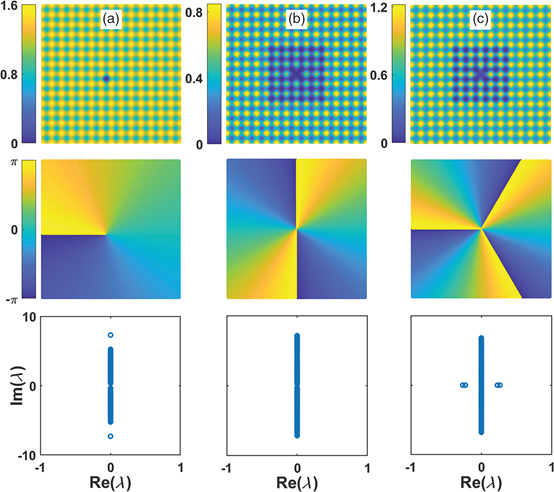Recently, based on Newton’s iteration and linear-stability analysis for searching stationary solutions methods, the research group from Xi'an Institute of Optics and Precision Mechanics (XIOPM) of the Chinese Academy of Sciences (CAS) predicted that ultracold atoms have two kinds of stable gap-type dark localized modes in optical lattices. The results were published on Advanced Photonics, which were also selected as Highlighted Publication by International Society for Optical Engineering (SPIE).
Bright solitons and dark ones, which are supported by self-focusing and self-defocusing nonlinearities, have been created experimentally in atomic condensates. Particularly, dark solitons in cigar-shaped Bose-Einstein condensate have been observed. However, the dark gap solitons have remained experimentally unproven, and their properties in more than one dimension, unknown.

Representative examples of 2-D dark gap solitons. ( Image by XIPOM)
Recently, associate researcher Jianhua Zeng, from XIOPM, predicted that optical lattices, onto which ultracold atoms are placed, enable the formation of stable gap-type dark localized modes in both one- and two-dimensional geometries. They introduced bright defects to optical lattices to accomplish the mission of stabilizing 2-D dark gap solitons and vortices, which was previously considered to be challenging in a 2-D lattice.
Since this defect-engineering method is widely used in semiconductor technology to design optical devices, and the hollow defects (holes) adhering to optical lattices lead to the formation of 2-D intra-band solitons. The results will be useful to investigate defect-engineering for designing optical materials and devices.
The research project was supported by the National Natural Science Foundation of China and the Youth Innovation Promotion Association of the Chinese Academy of Sciences.
Download: